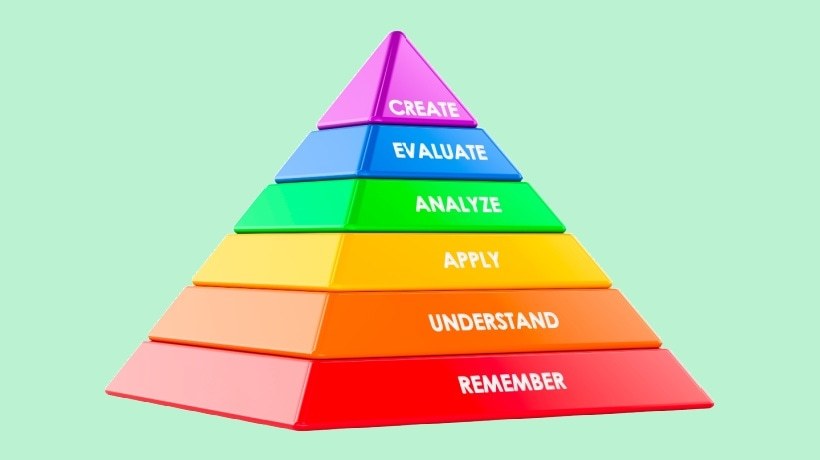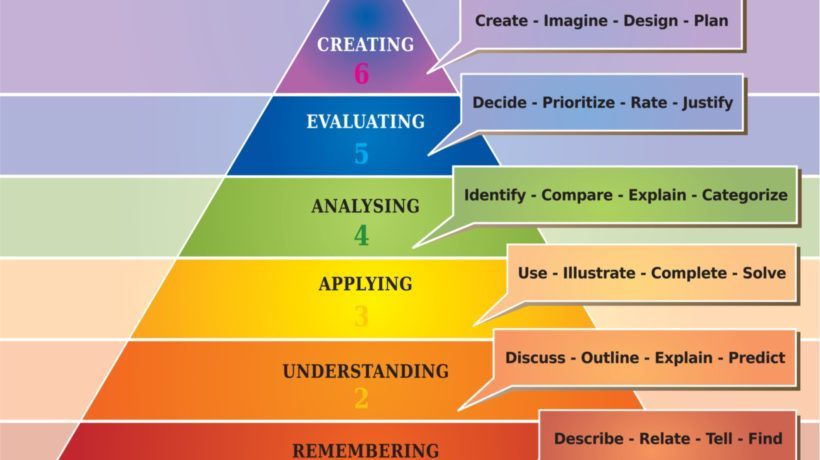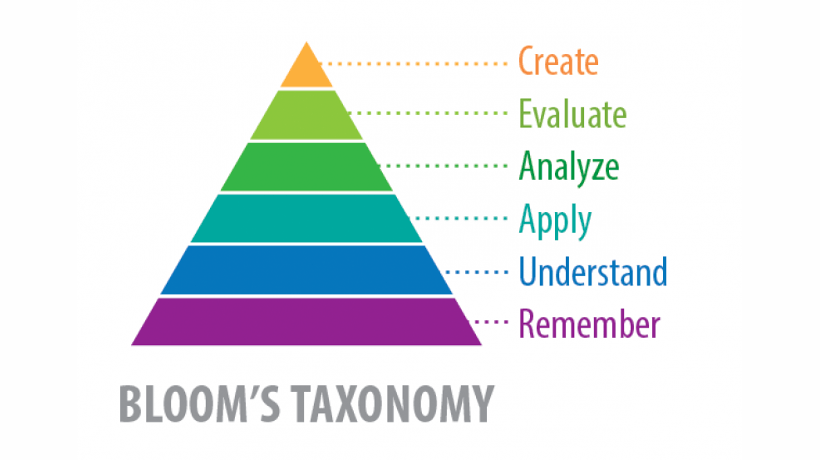Old Framework, New Relevance
Do your learning objectives start with "understand," "apply," or "analyze"? If so, you've probably used Bloom's Taxonomy, whether intentionally or not.
This six-tiered framework has guided Instructional Designers for decades. But in 2025, with AI-enhanced learning, personalized pathways, and immersive technologies reshaping how we learn, it's time to ask: Should you still be using it? Or has it quietly slipped into the archives of Instructional Design history?
The answer isn't just "yes." It's "yes, if you know how to make it work for today."
This article revisits Bloom's well-known learning framework, evaluates its role in digital learning environments, and offers suggestions on how modern Instructional Designers can apply or adapt it to today's eLearning landscape.
What Is Bloom's Taxonomy?
In 1956, educational psychologist Benjamin Bloom, along with a team of researchers, introduced a framework called "Bloom's Taxonomy of Educational Objectives."
This model aimed to help teachers and educators design better learning experiences by categorizing levels of thinking and learning.
The original taxonomy focused on the cognitive domain, how people acquire and use knowledge, and was structured as a hierarchy of six categories, from the simplest to the most complex mental skills:
- Knowledge – Recall of facts, terms, and basic concepts.
- Comprehension – Understanding meaning, translation, or interpretation.
- Application – Using learned material in new situations.
- Analysis – Breaking down material to understand its structure.
- Synthesis – Putting parts together to form a new whole.
- Evaluation – Judging the value of ideas or materials.
This version was widely used for decades to create lesson plans, assessments, and learning outcomes, especially in classrooms and traditional education settings.
The Revised Bloom's Taxonomy: Anderson & Krathwohl (2001)
In 2001, a former student of Bloom, Lorin Anderson, and cognitive psychologist David Krathwohl, led a team to revise and modernize the original taxonomy to reflect more current understanding of learning and teaching:
- Remember
- Understand
- Apply
- Analyze
- Evaluate
- Create
Here are the key changes in the revised version.
1. Verb-Based Categories
The original nouns (like "knowledge" or "synthesis") were changed to verbs to reflect the active nature of learning. For example:
- Knowledge became Remember
- Comprehension became Understand
- Synthesis became Create
2. Reordered Hierarchy
In the revised version, Create was placed at the highest level, above Evaluate, because creating something new is seen as more complex than evaluating existing ideas.
3. Two Dimensions
The revised taxonomy introduced a two-dimensional framework:
- The Knowledge Dimension – Factual, conceptual, procedural, and metacognitive knowledge.
- The Cognitive Process Dimension – The six thinking levels: Remember, Understand, Apply, Analyze, Evaluate, and Create.
This allowed educators to classify not just what students should know, but also how they should think about that knowledge.
Why The Revised Version Matters Today
The revised taxonomy is more aligned with modern learning environments, especially in eLearning and corporate training. It:
- Uses action words that make writing learning objectives easier and more effective.
- Encourages higher-order thinking in project-based, experiential, and online learning.
- Supports Instructional Design models like ADDIE, SAM, and backward design.
By using the revised version, Instructional Designers can more accurately align activities, content, and assessments to what learners need to achieve, especially in digital and remote learning contexts.
Rethinking Bloom's Taxonomy For Today's Learners
While Bloom's Taxonomy remains relevant, today's learners have different expectations. They want learning to be interactive, fast, mobile-friendly, and real-world focused.
So, how do we adapt Bloom's Taxonomy to modern eLearning?
1. Pair Bloom's Taxonomy With Real-Life Contexts
Instead of abstract tasks, tie each level to something learners might do on the job. For instance, rather than just "Analyze data," prompt learners to "Analyze customer feedback to improve service."
2. Use Multimedia And Simulations
Bloom's levels can come to life through interactive videos, branching scenarios, AR/VR, and simulations. These tools let learners practice Apply, Analyze, and Create in safe, engaging environments.
3. Integrate With Agile And Rapid Development Models
Traditional Instructional Design was linear. But now, agile models like SAM or Design Thinking encourage rapid iteration. Bloom's can still fit by treating it as a flexible guide, not a rigid rulebook.
Write SMART Learning Objectives Using Bloom's Action Verbs
Learning objectives set the foundation for your course. They guide what content to include, how learners will interact with it, and how success will be measured.
How to do it:
- Use SMART criteria (Specific, Measurable, Achievable, Relevant, Time-bound) when writing objectives.
- Choose precise action verbs from Bloom's Taxonomy based on the cognitive level you want to target.
- Examples:
- Remember → "List the parts of a computer."
- Analyze → "Differentiate between qualitative and quantitative data."
- Create → "Design a marketing plan for a new product."
This ensures clarity for both designers and learners, and it helps in tracking learner progress meaningfully.
Align Content And Assessments To The Same Level Of Thinking
A common Instructional Design mistake is misalignment, teaching at one level and assessing at another.
How to do it:
- If your objective is at the Apply level (e.g., "Use formulas to calculate ROI"), make sure the lesson activities and quizzes also ask learners to apply, not just recall formulas.
- Avoid testing memory when the goal is analysis or evaluation. Ensure every quiz, scenario, or assignment directly supports the desired Bloom's level.
This alignment boosts learning effectiveness and credibility, especially in corporate or compliance training.
Start Small, Especially For Microlearning Modules
Microlearning is meant to be focused and easy to consume. Trying to teach too much in a short module overwhelms learners and weakens retention.
How to do it:
- Focus on one Bloom's level per microlearning module, especially lower-order levels like Remember and Understand.
- Example: Create one short lesson that helps learners "Define phishing attacks" (Remember), and another that shows how to "Recognize phishing emails" (Apply).
This makes your modules scalable and stackable, so they can eventually support more complex learning paths.
Use Higher-Order Thinking For Capstone Activities Or Final Evaluations
Capstone activities or end-of-course assessments are where learners demonstrate true mastery.
How to do it:
- Challenge learners to analyze, evaluate, or create something using what they've learned.
- Examples:
- Analyze a real-world case study and provide recommendations.
- Evaluate different software tools and choose the best one for a task.
- Create a presentation or proposal that solves a problem.
These higher-order tasks help bridge the gap between theory and real-world performance, especially in job training or skill development.
Mix Modalities: Use Text, Video, Interactive Tools, And Real-World Tasks
People learn in different ways, and digital learning environments offer endless possibilities for multimodal instruction.
How to do it:
- Use text and infographics for Remember and Understand levels.
- Include videos or demos for Apply.
- Add branching scenarios, simulations, or role-plays for Analyze and Evaluate.
- Design projects, storytelling, or real-world tasks for Create.
Mixing media not only maintains engagement but also targets various cognitive levels in Bloom's Taxonomy, ensuring a richer learning experience.
To Conclude
Bloom's Taxonomy may have been developed in a different era, but its value in Instructional Design remains timeless. At its core, it's not just a hierarchy of verbs; it's a roadmap for meaningful learning.
Bloom's Taxonomy provides the structure needed to design with intention, where content must be engaging, adaptive, and results-driven. It helps you balance creativity with clarity, ensuring that every module, quiz, or activity moves learners toward real understanding and performance.
The key is to use it not as a strict formula, but as a flexible thinking tool, one that evolves with technology, trends, and the changing needs of your learners.









